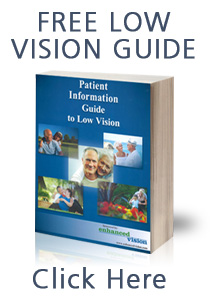According to the July 4, 2005 Food Navigator article, “High carb diet increases risk of cataract development in elderly women,” new research suggest the higher your carbohydrate intake, the great the risk (in older women) to develop cataracts.
Scientists working for the Agricultural Research Service, the US government’s scientific agency, tracked 471 women aged between 53 to 73 years during a 14 year period. Researchers found that women in the study whose average carbohydrate intake was between 200 and 268 grams per day were 2.5 times more likely to get cortical cataracts than the women whose intake was between 101 and 185 grams per day.
Low-carbohydrate diets recommend you eat only 20 to 60 grams of carbohydrates daily. Low-fat diets suggest you eat up to 50 percent carbs daily. But the recommended dietary allowance for daily carbohydrate intake for adults and children is 130 grams, which is based on how much glucose the brain needs.Your brain needs glucose.
At the same time, too much fructose creates uric acid which may raise your blood pressure. Also too much meat or certain types of fish in the diet also raises uric acid levels. That’s why balance is suggested.
The UN’s World Health Organization estimating between 16 to 20 million people worldwide are currently blind as a result of cataracts, the leading cause of blindness in the world. Do too many simple carbohydrates, and especially sugar, contribute to the formation of cataracts as people grow older?
One possible reason that scientists think might cause cataracts is that increased exposure to glucose, a breakdown product of carbohydrates, might damage our eyes’ lenses. See the article, High Carbs May Boost Cataract Risk. You can also Read the entire July 2005 news report, High Carbs May Boost Cataract Risk, at the US Department of Agriculture’s Food & Nutrition Research Briefs site.
According to the US Department of Agriculture, Agricultural Research Service, in a July 2005 news report titled, “High Carbs May Boost Cataract Risk,” High carbohydrate diets were linked with a greater risk of cataracts in a study of 417 women age 53 to 73. New details about the association between high carbohydrates and cataract risk have emerged from a study reported in the June 2005 issue of the American Journal of Clinical Nutrition (volume 81, pages 1411-1416).
Women who ate an average of 200 to 268 grams of carbohydrates each day were more than twice as likely to develop cortical cataracts, than women whose meals provided between 101 and 185 grams by day’s end. That’s according to the ARS-funded scientists at the ARS Jean Mayer USDA Human Nutrition Research Center on Aging at Tufts University, Boston, MA.
The recommended daily allowance for carbohydrates for adults and children is 130 grams. Researchers analyzed eye exam results and 14 years’ worth of food records collected from 417 women, aged 53 to 73. The women, participants in the nationwide Nurses’ Health Study, did not have a history of cataracts but were recently diagnosed with the disease.
Cataracts are a major cause of blindness worldwide and afflict an estimated 20 million Americans. Scientists don’t know what links high-carbohydrate intake to increased cataract risk.
Does increased exposure to glucose, which is a breakdown product of carbohydrates, damage the lenses of your eyes? Read the entire July 2005 news report, High Carbs May Boost Cataract Risk, at the US Department of Agriculture’s Food & Nutrition Research Briefs site.
UC Davis Researching Stem Cells for Treating Specific Types of Blindness
Presently, according to an August 1, 2010 UC Davis Health System article, Q&A: Stem cell work moves quickly – UC Davis News & Information, Researchers are looking hard at bone marrow stem cells for treating blindness caused by diabetic retinopathy. UC Davis researchers have asked the federal government’s permission to become the first clinical center in the country to test a stem cell treatment for one of the most common causes of blindness in working-age adults: diabetic retinopathy.
The center hopes to begin enrolling people next year in its study, which would involve extracting a person’s own stem cells from his or her bone marrow and injecting the cells into the eye, according to the August 1, 2010 UC Davis news article,”Q&A: Stem cell work moves quickly; UCD studies use for blindness.”
If that clinical trial goes well, UC Davis could move on within a year or two to test the same procedure in people with macular degeneration, a leading cause of blindness among seniors. This approach has been tested at UC Davis in mice, and so far it appears to restore vision without dangerous side effects in the eye. See the article, Stem Cells for Macular. New Stem Cell Treatments for patients with Macular Degeneration. Check out the article, Stem cells demonstrated to reverse macular degeneration blindness.
Also see the article, “UC Davis researchers focus on stem cells to treat vision loss,” UC Davis researchers now are poised to begin pioneering the use of adult stem cells to treat vision problems in patients with blockage of blood flow to the retina-the condition known as retinal vein occlusion or “RVO.”
This will be the first time stem cell therapy has been tried with humans suffering from retinal vein occlusion, according to the article. UC Davis scientists also are working on stem cell-based therapies that might delay progression of macular degeneration, which is the number one cause of age-related blindness in the nation. Such projects are all part of the research activities now underway through the new UC Davis Stem Cell Program in Sacramento. On another note, does a high carbohydrate diet boost your risk for cataracts?
UC Davis in the Sacramento regional area removes cataracts from the eyes of an eagle
In the Sacramento area, UC Davis removed cataracts from the eyes of an eagle. a clinical team at the William R. Pritchard Veterinary Medical Teaching Hospital successfully removed cataracts from both eyes of a 35-year-old bald eagle named “Modoc.” Research in what causes cataracts is ongoing.
The feisty bird, a once-wild specimen unable to live on its own, came from the Micke Grove Zoo in Lodi, California, near Sacramento, according to the Sept. 12, 2007 UC Davis Veterinary Medicine site article, “Cataract Surgery Improves Zoo Eagle’s Quality of Life.”
Zoo officials had noted that the animal’s blindness sharply reduced its ability to move around, find its food and maintain an awareness of its surroundings. You heard the expression, “the eyes of an eagle.” Basically, an eagle needs his eyesight to find food and move/fly around.
Zoo manager Ken Nieland stated, “Micke Grove Zoo staff is committed to ensuring the best possible quality of life for animals under our care. Opportunities such as that provided by the eagle eye surgery not only offer hope for an improved life for this bird, but also hold promise for increased knowledge and skill in treating other animals that share a similar condition.”
To reduce possible complications in the aging animal, the eagle received a complete workup at the Companion Avian and Exotic Pets Service prior to surgery. Faculty members and technicians closely monitored its anesthesia.
Two eye surgeons used ultrasound equipment to gently break up and extract the cataracts. Fourth-year veterinary students observed the surgery magnified on a video screen in the surgical suite. As they watched, a resident from the Ophthalmology Service (see PDF poster) quizzed them about avian eye anatomy and answered questions about the procedure.
The bird’s veterinarians reported after the surgery, “He’s doing great and can see very well now.” They treated the eagle for several days before it returned home. Zoo officials expect a big improvement in the bald eagle’s quality of life now that it can see again.
When it comes to diets, be aware that foods which raise the uric acid levels, such as fructose used as sweeteners and purines in certain animal or even fish proteins also can raise blood pressure. Watch out for books that recommend artificial sweeteners that have a long list of side effects complaints from consumers.
You get cataracts in your eyes when proteins in your eyes undergo changes. Diabetes also is a leading cause of cataracts. Controlling blood glucose levels is the way to prevent vision issues. In one experiment, according to the book, The Sugar Fix by Richard J. Johnson, M.D. with Timothy Gower, (page 142) rats given fructose were more likely to develop cataracts. See the articles, Hypothesis: Could Excessive Fructose Intake and Uric Acid Cause, and Fructose Hampers Hormone That Controls Appetite, UF Study Finds, and Cataract is the most important cause of blindness in the world.
Original post can be found at: http://www.examiner.com/nutrition-in-sacramento/august-is-national-cataract-awareness-month-how-high-carb-diets-may-boost-risk









